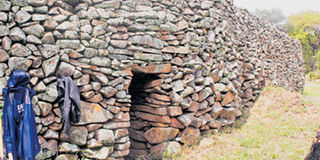Ceremony marks listing of Thimlich Ohinga among world heritage sites

Thimlich Ohinga’s walls consist of meticulously arranged stones, with lintels supporting the entrance. PHOTO | FILE | NATION MEDIA GROUP
What you need to know:
Found in Migori County, Thimlich Ohinga means “frightening dense forest” in the Dholuo language.
On their website, Unesco says the site is the largest and best preserved of these traditional enclosures.
A famous tourist centre in western Kenya was on Tuesday included among Kenya’s world heritage sites.
Thimlich Ohinga was elevated to the new status at a ceremony attended by the United Nations Educational, Scientific and Cultural Organisations director for the bureau education Ann Therese Ndong Jatta, National Museums of Kenya boss Mzalendo Kibunjia and Migori Governor Okoth Obado.
Found in Migori County, Thimlich Ohinga means “frightening dense forest” in the Dholuo language.
The dry-stone walled settlement is situated north-west of Migori town and was probably built in the 16th century, according to UNESCO.
On their website, Unesco says the site is the largest and best preserved of these traditional enclosures.
LOCAL ARCHITECTURE
It is an outstanding example of local architecture characterised by a three-phase dry-stone laying technology that is not known to exist anywhere else in the region.
The complex is composed of four main enclosures — Kochieng, Kakuku, Koketch and Kolouch.
Commemoration of the site’s elevation was held at the Louis Leakey Auditorium in Nairobi following its being listed in the world heritage sites last year.
It is not the seventh such sit in Kenya after elevation of Lamu Old Town, Fort Jesus, Kenya’s Lake Systems, Lake Turkana National Parks, Mount Kenya National Park and Mijikenda Kaya Forests.





